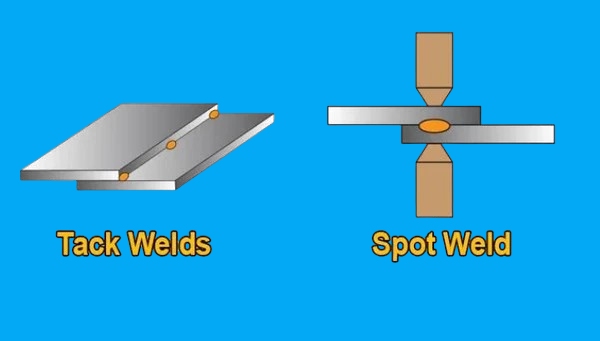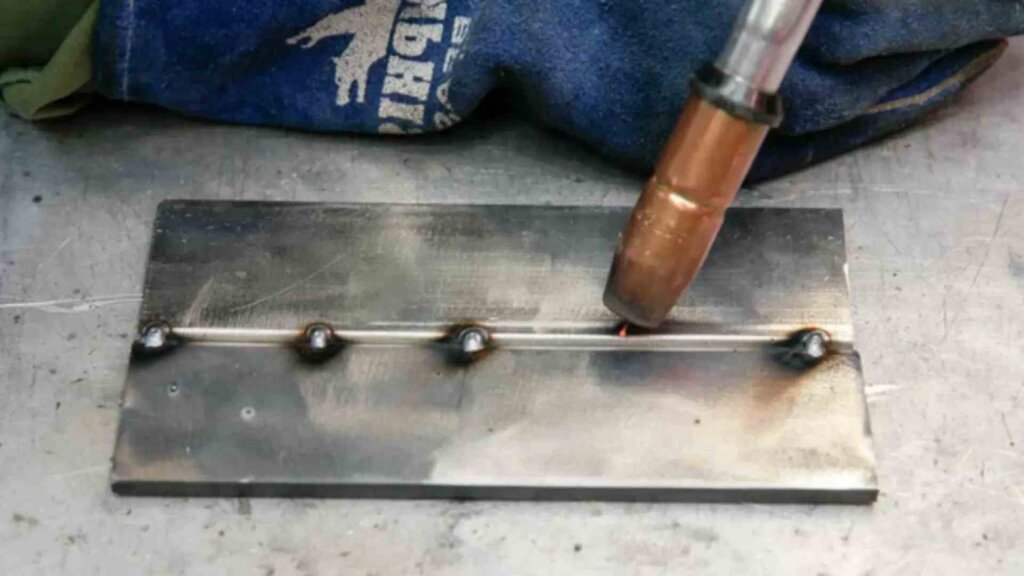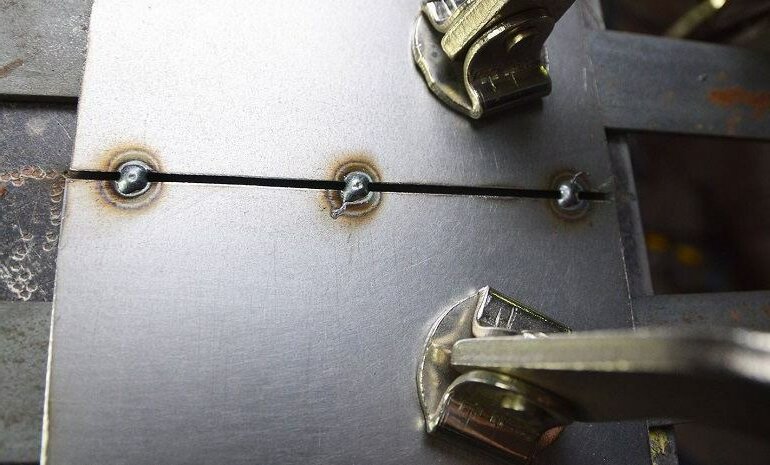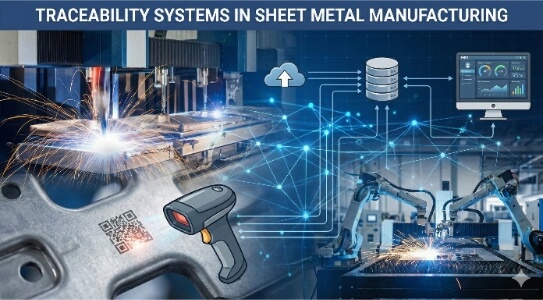Todos os projectos de fabrico enfrentam uma decisão crítica na fase de união. Os fabricantes de metal debatem frequentemente a soldadura por pontos e a soldadura por pontos, uma vez que a escolha do método errado pode levar ao desperdício de materiais, ao aumento dos custos e a atrasos no projeto. Cada técnica serve objectivos distintos no fabrico de metais, mas muitos profissionais precisam de ajuda para determinar qual a abordagem que melhor se adequa às suas necessidades.
Estas duas técnicas de soldadura têm finalidades diferentes no fabrico de metais. A soldadura por pontos cria juntas temporárias para manter as peças em posição antes da soldadura final, enquanto a soldadura por pontos funde permanentemente chapas metálicas através de resistência eléctrica. Cada método traz vantagens únicas para aplicações específicas.
Deixe-me guiá-lo através de uma comparação detalhada destas duas técnicas de soldadura. Irá descobrir as principais diferenças, as aplicações ideais e as considerações práticas para o ajudar a tomar decisões informadas para o seu próximo projeto.

Fundamentos da soldadura de aderência
A soldadura por pontos constitui a espinha dorsal da soldadura de precisão montagem metálica. Este passo de soldadura preliminar cria pontos de fixação temporários que mantêm o alinhamento durante o processo de soldadura final. Vamos explorar os principais aspectos desta técnica.
O que é a soldadura de aderência?
Soldadura de aderência faz soldaduras pequenas e temporárias para manter as peças de metal na posição correta. Estas soldaduras curtas funcionam como alfinetes num projeto de costura, mantendo tudo alinhado até à soldadura final. O processo cria ligações suficientemente fortes para manter as posições das peças, sendo facilmente removíveis se forem necessários ajustes.
Objetivo da soldadura de aderência no fabrico de metais
A soldadura de aderência evita o deslocamento de componentes durante o processo de soldadura principal. Esta técnica revela-se inestimável quando se trabalha com montagens complexas ou costuras longas. A colocação correta do ponto mantém a precisão dimensional e reduz a distorção no produto final.
Técnicas utilizadas na soldadura de aderência
Os soldadores profissionais colocam as soldaduras por pontos em pontos estratégicos para controlar a distribuição do calor. Normalmente, colocam pontos de soldadura uniformemente ao longo da linha da junta, trabalhando do centro para fora. O tamanho e o número de pontos de soldadura dependem da espessura do material e do comprimento da junta.
Vantagens da soldadura de aderência
A soldadura por pontos oferece precisão no posicionamento das peças e na verificação da montagem antes da soldadura final. O método reduz o desperdício de material ao permitir verificações e ajustes de encaixe. As soldaduras de remate também ajudam a controlar a deformação, distribuindo o calor uniformemente pela peça de trabalho.
Limitações e desvantagens da soldadura de aderência
O processo requer habilidade para evitar a criação de pontos fracos na soldadura final. Uma má colocação do ponto de aderência pode levar a defeitos ou distorção. O passo adicional acrescenta tempo ao processo de fabrico, embora este investimento seja normalmente compensado através da melhoria da qualidade.
Fundamentos da soldadura por pontos
Soldagem a ponto revolucionou as indústrias automóvel e de fabrico. Este processo de soldadura por resistência eléctrica cria juntas fortes e permanentes entre folhas de metal através de calor e pressão concentrados.
O que é a soldadura por pontos?
A soldadura por pontos cria juntas permanentes através da aplicação de pressão e corrente eléctrica em pontos específicos entre folhas de metal. O processo derrete e funde os materiais em locais controlados sem metal de enchimento adicional. Este método automatizado produz ligações consistentes e de elevada resistência em segundos.
Como funciona a soldadura por pontos?
Dois eléctrodos de cobre pressionam as peças metálicas uma contra a outra enquanto conduzem uma corrente eléctrica elevada. A resistência natural dos metais gera um calor intenso no ponto de contacto. Sob pressão, este calor cria uma pepita fundida que se solidifica numa forte ligação metálica.
O papel da resistência eléctrica na soldadura por pontos
A resistência eléctrica converte o fluxo de corrente em calor concentrado no ponto de soldadura. As propriedades de resistência do metal determinam as definições de corrente e de tempo necessárias. Diferentes materiais necessitam de ajustes de parâmetros específicos para obter uma força de soldadura óptima.
Aplicações da soldadura por pontos
Os fabricantes de automóveis utilizam extensivamente a soldadura por pontos para a montagem de carroçarias. A técnica é excelente na união de componentes de chapa metálica para electrodomésticos e eletrónica. As linhas de produção confiam na soldadura por pontos pela sua rapidez e consistência em operações de grande volume.
Vantagens da soldadura por pontos
O processo proporciona resultados rápidos e repetíveis, ideais para a automatização. A ausência de materiais de enchimento significa menores custos de consumíveis. As soldaduras limpas requerem um trabalho de acabamento mínimo. Os modernos sistemas de soldadura por pontos oferecem um controlo preciso dos parâmetros de soldadura.
Limitações e desvantagens da soldadura por pontos
A soldadura por pontos funciona melhor com combinações de metais e espessuras específicas. Os custos iniciais do equipamento são mais elevados do que os das ferramentas de soldadura básicas. O acesso a ambos os lados da peça de trabalho limita algumas aplicações. O desgaste do elétrodo requer manutenção e substituição regulares.

Soldadura de aderência vs. soldadura por pontos: Uma comparação direta
Fazer a escolha certa entre estes métodos de soldadura afecta o sucesso do projeto. Esta comparação analisa os principais factores para orientar o seu processo de decisão.
Processo e equipamento utilizado
A soldadura por pontos requer equipamento normal de soldadura por arco, como Máquinas MIG ou TIG. Os soldadores criam manualmente juntas pequenas e temporárias. A soldadura por pontos necessita de equipamento especializado com eléctrodos de cobre e sistemas de controlo elétrico precisos. Uma vez definidos os parâmetros, o processo é executado automaticamente.
Compatibilidade de materiais
A soldadura por pontos funciona com a maioria dos metais soldáveis de diferentes espessuras. Este método é adequado para aço carbono, aço inoxidável e alumínio. A soldadura por pontos funciona melhor em chapas metálicas finas, particularmente em aço macio e materiais galvanizados. Algumas combinações de materiais são difíceis de soldar por pontos.
Resistência e durabilidade das soldaduras
As soldaduras de remate servem como suportes temporários, concebidos para se romperem durante a soldadura final. A sua resistência varia consoante o tamanho e a técnica. As soldaduras por pontos criam juntas permanentes e fortes que mantêm uma qualidade consistente. O tamanho da pepita determina a resistência final da junta.
Velocidade e eficiência
A soldadura por pontos demora mais tempo devido ao posicionamento manual e à soldadura. Cada tarefa requer a atenção individual de soldadores qualificados. A soldadura por pontos proporciona resultados rápidos, completando frequentemente as juntas em segundos. O processo automatizado mantém taxas de produção estáveis.
Considerações de custo
A soldadura por pontos utiliza equipamento de soldadura comum, mas exige mão de obra especializada. Os custos de material mantêm-se baixos com uma utilização mínima de metal de adição. A soldadura por pontos requer um investimento inicial mais elevado em equipamento especializado. Os custos operacionais diminuem com a automatização e sem materiais de enchimento.
Factores-chave a considerar na escolha de um método de soldadura
Fazer a escolha certa entre estes métodos de soldadura afecta o sucesso do projeto. Esta comparação analisa os principais factores para orientar o seu processo de decisão.
Espessura e tipo de material
A espessura do metal orienta a seleção do método de soldadura. A soldadura por pontos lida facilmente com chapas grossas e componentes estruturais. As chapas finas com menos de 3 mm funcionam melhor com a soldadura por pontos. A composição do material afecta a soldabilidade - o aço-carbono responde bem a ambos os métodos, enquanto os metais de alta liga necessitam de uma consideração especial.
Volume de produção e fluxo de trabalho
As exigências de produção moldam as escolhas de soldadura. Pequenos lotes de produção beneficiam da flexibilidade da soldadura por pontos. As operações de grande volume ganham eficiência com a automatização da soldadura por pontos. O seu padrão de fluxo de trabalho influencia o tempo de preparação versus a velocidade de produção.
Requisitos de precisão
As tolerâncias de projeto orientam as decisões de soldadura. A soldadura por pontos permite ajustes contínuos durante a montagem. A soldadura por pontos mantém uma qualidade de junta consistente através de ajustes programados. As geometrias complexas necessitam do controlo que a soldadura por pontos proporciona.
Acessibilidade da zona de soldadura
A localização da junta tem impacto na seleção do método. A soldadura por pontos alcança espaços apertados com o mínimo de equipamento. A soldadura por pontos necessita de acesso livre a ambos os lados da junta. Considere a disposição do seu espaço de trabalho e a geometria da peça ao escolher entre os métodos.

Equívocos comuns sobre a soldadura de aderência e a soldadura por pontos
Esta secção esclarece mal-entendidos frequentes sobre ambos os métodos de soldadura. A correção destes equívocos ajuda a evitar erros dispendiosos e melhora o planeamento do projeto no trabalho de fabrico de metais.
A soldadura de aderência não é permanente - verdadeiro ou falso?
Muitos fabricantes acreditam que as soldaduras por pontos partem sempre durante a soldadura final. A verdade varia consoante a técnica e a aplicação. As soldaduras de aderência fortes tornam-se frequentemente parte do cordão de soldadura final. Soldadores experientes ajustam a força de aderência com base nas necessidades do projeto. Uma má colocação do ponto de soldadura pode enfraquecer a junta final.
A soldadura por pontos funciona para todos os materiais - será que isto é exato?
Esta crença comum leva a falhas nos projectos - a soldadura por pontos adequa-se a combinações de materiais e espessuras específicas. O processo necessita de uma resistência eléctrica adequada para gerar calor. Alguns metais, como o cobre, resistem à soldadura por pontos devido à sua elevada condutividade. A seleção de materiais requer uma avaliação cuidadosa da compatibilidade da soldadura por pontos.
Conclusão
A soldadura por pontos e a soldadura por pontos desempenham papéis vitais no fabrico moderno de metal, trazendo cada uma delas vantagens distintas para o chão da oficina. O sucesso na união de metais depende da escolha do método correto para a sua tarefa.
Escolha a soldadura por pontos quando necessita de versatilidade e controlo prático. Escolha a soldadura por pontos para uma produção rápida e automatizada. Combine o seu método de soldadura com os requisitos do seu projeto, especificações de materiais e objectivos de produção.
Obtenha hoje o seu orçamento personalizado gratuito
Apoio de engenharia especializado para o seu próximo projeto
Resposta rápida
Orçamento no prazo de 24 horas
Apoio DFM
Desenhar para fazer
Qualidade garantida
Certificação ISO 9001:2015
Sem encomenda mínima
Do protótipo à produção
Sem compromisso - 100% Consulta gratuita
Olá, chamo-me Kevin Lee

Nos últimos 10 anos, tenho estado imerso em várias formas de fabrico de chapas metálicas, partilhando aqui ideias interessantes a partir das minhas experiências em diversas oficinas.
Entrar em contacto

Kevin Lee
Tenho mais de dez anos de experiência profissional no fabrico de chapas metálicas, especializando-me em corte a laser, dobragem, soldadura e técnicas de tratamento de superfícies. Como Diretor Técnico da Shengen, estou empenhado em resolver desafios complexos de fabrico e em promover a inovação e a qualidade em cada projeto.




